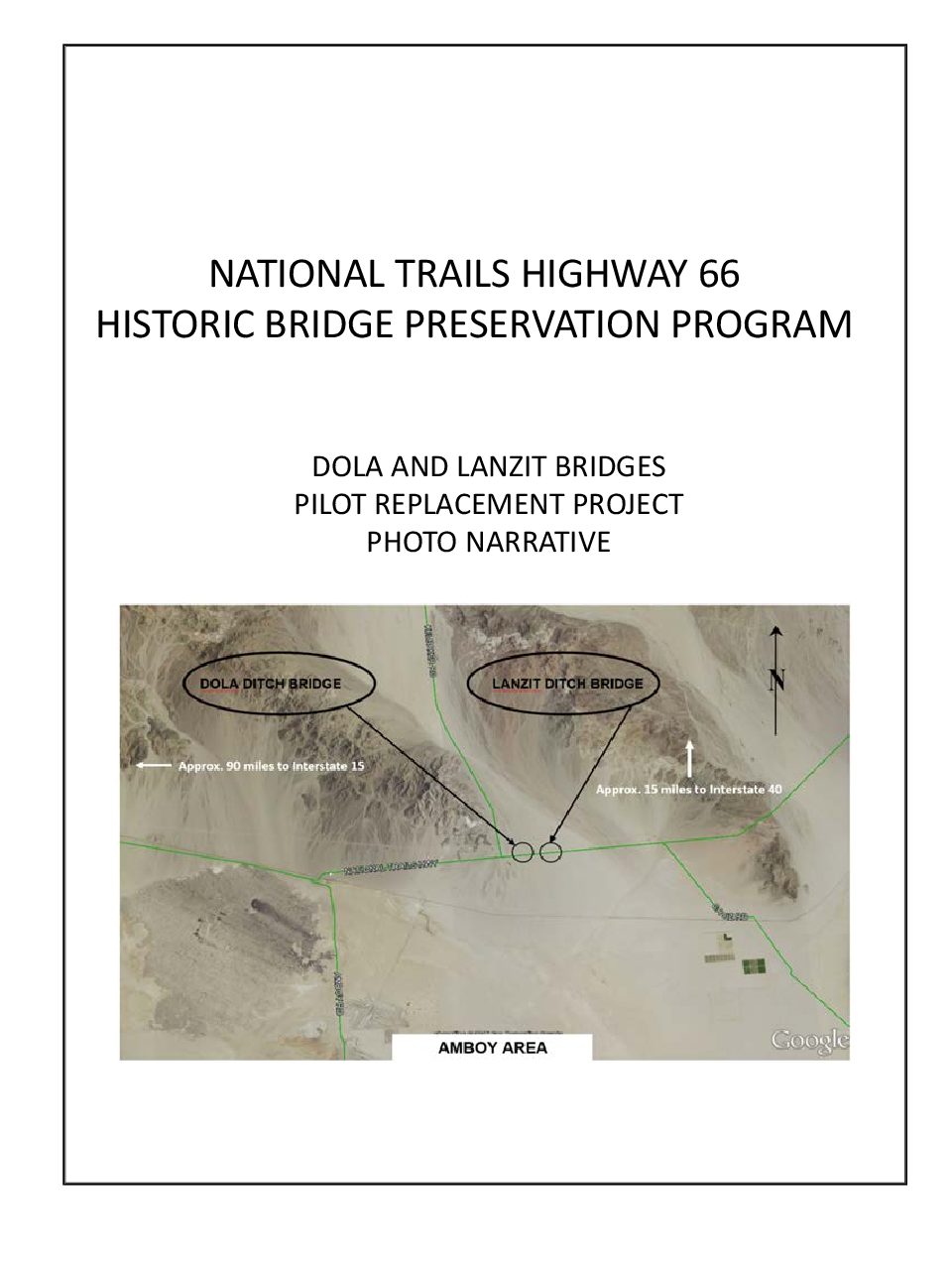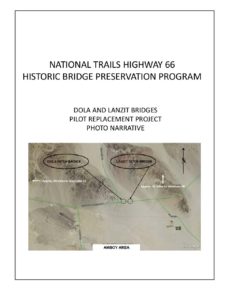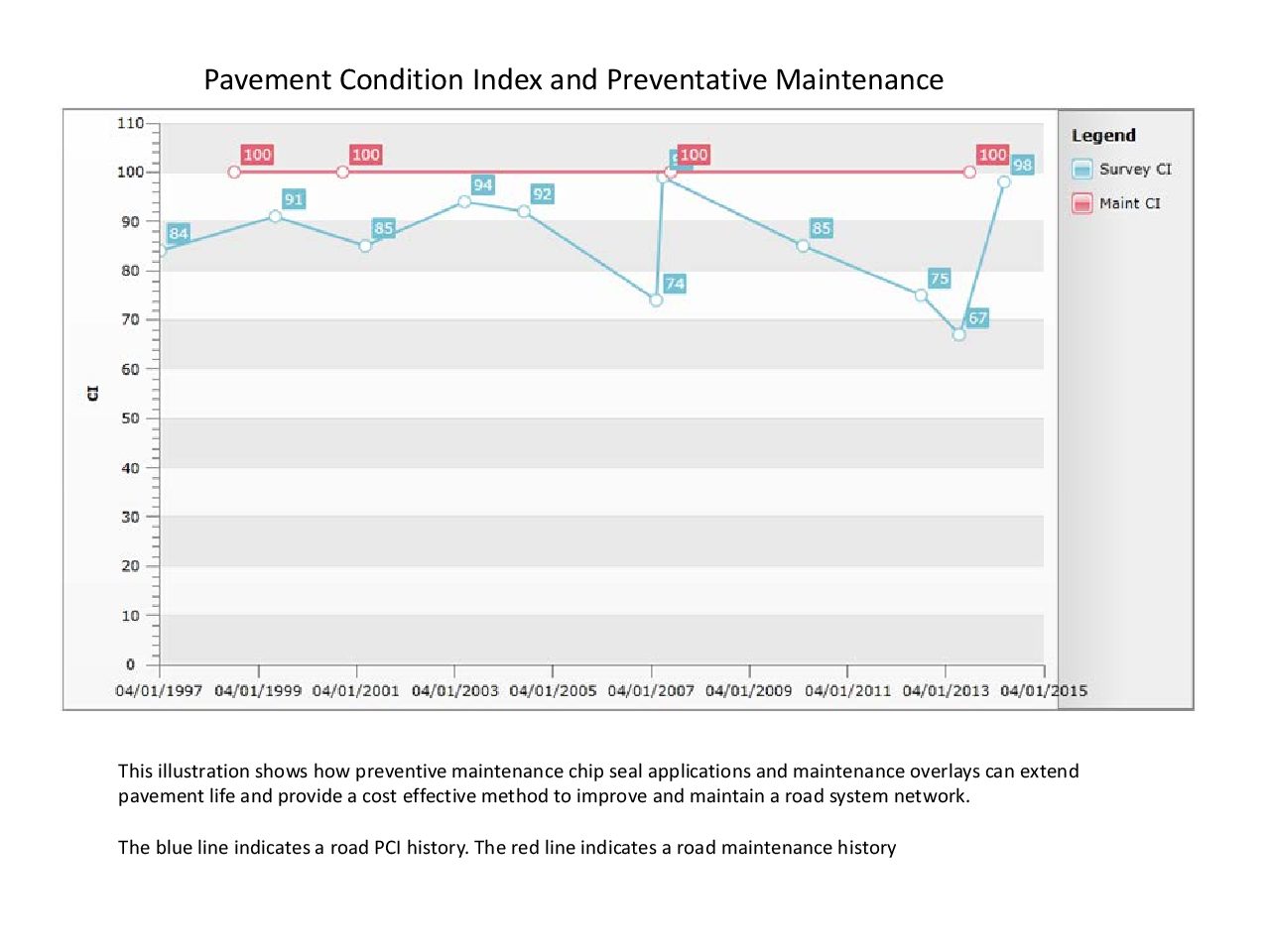US Route 66 Bridge Preservation Program (Finalist)
Location
National Trails Hwy between the Cities of Barstow and Needles
City or County Responsible for Project
County of San Bernardino
Category
Bridge: Efficient and Sustainable Bridge Maintenance, Construction and Reconstruction Projects
Author
Sundaramoorthy (Sri) Srirajan, M.S. P.E
County of San Bernardino Department of Public Works
825 E. 3rd Street, Room 143, San Bernardino, CA 92415-0835
(909) 387-8166
Project Description
National Trails Highway (NTH), also known as Historic Route 66, was established as one of America’s first transcontinental highways. The County of San Bernardino is responsible for maintaining NTH between the Cities of Barstow and Needles. This corridor, the longest remaining original section of Historic Route 66, containing 127 timber bridges, was built between 1929 and 1931. This section of highway is critical to the economic vitality of an underserved rural region larger than some U.S. states, provides the only by-pass to Interstate 40, and is deemed eligible for the National Register of Historic Places. The County embarked on an ambitious program to rehabilitate or replace structurally deficient historic timber bridges along a 111-mile stretch of this corridor. The County recognized the project’s complexity and foresaw the need for creation of a corridor-wide 10-year Bridge Management Plan (BMP) to develop a strategic, systematic, and balanced approach for bridge replacement/rehabilitation. As part of the BMP, corridor bridges were divided into priority groups based on condition, common environmental issues, and structure types. The County sought to accelerate delivery of the bridge reconstructions/rehabilitations by looking at the corridor as a whole to streamline the design and approval process. Key aspects include a corridor-wide hydrology/hydraulic analysis, a programmatic agreement between the County, the California Department of Transportation (Caltrans), and the State Historic Preservation Office to fulfill National Historic Preservation Act (NHPA) Section 106 for potential effects on cultural/historic resources, and additionally with FHWA and Caltrans to establish a library of design standard details and templates to comply with current requirements, including seismic design requirements for modern timber bridges. Through recently completed demonstration bridges at Dola and Lanzit Ditches, the County obtained consensus between Caltrans Structures and Caltrans District 8 Cultural Resources to ensure compliance with NHPA Section 106. Historic bridge aesthetic features incorporated into the design include use of timber for all bridge members, white painted timber post railings, and soil covered rock slope protection to preserve the natural look within the channel. Cost-effectiveness comes from treating the individual projects as one large project by administering solutions to multiple concerns at one time. The savings in possible Highway Bridge Program funding for the eligible bridges using this approach is estimated at $30 million. The County successfully secured funding for the first priority group of nine bridges and is on track to secure funding for additional groups. This program demonstrates that it is possible to collaborate with different stakeholders to construct safety improvements meeting present day needs, while preserving cultural and historic resources through an innovative, cost-effective, and creative approach.




Add Comment